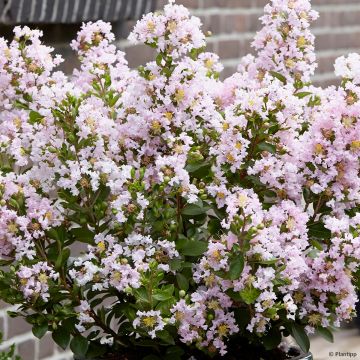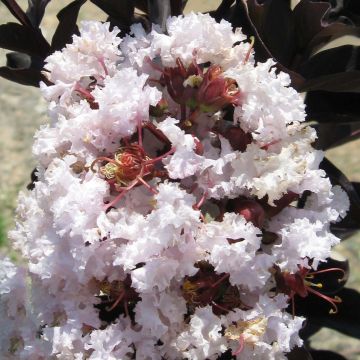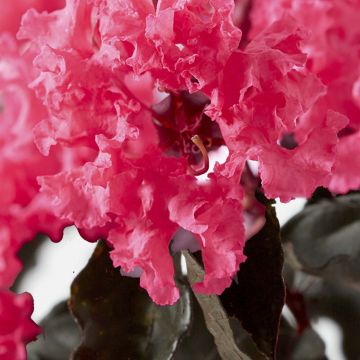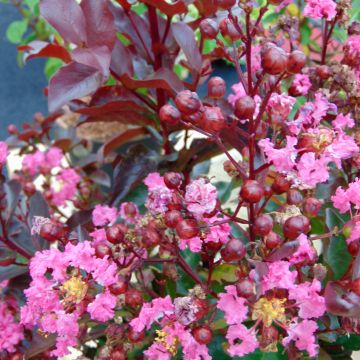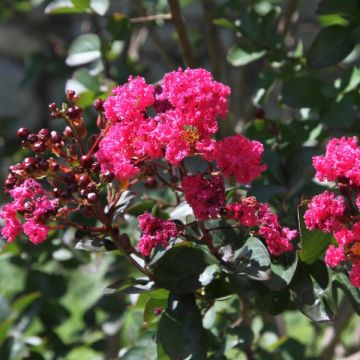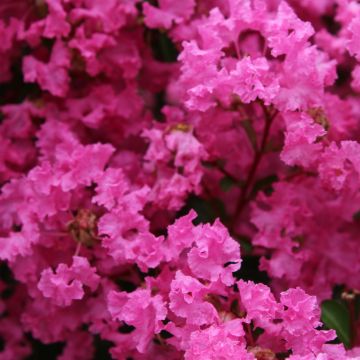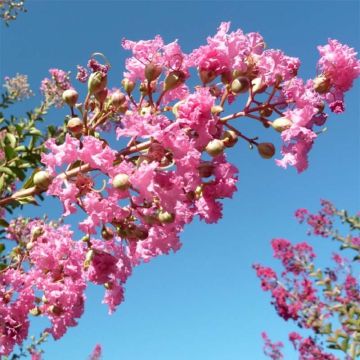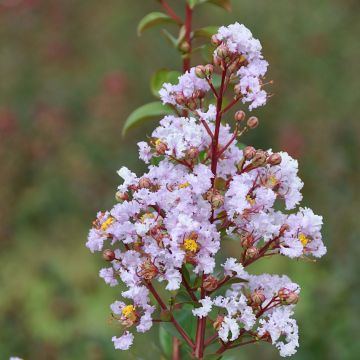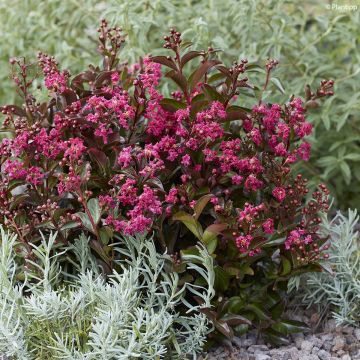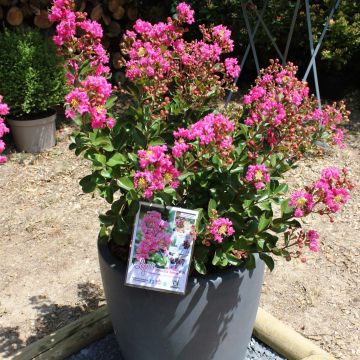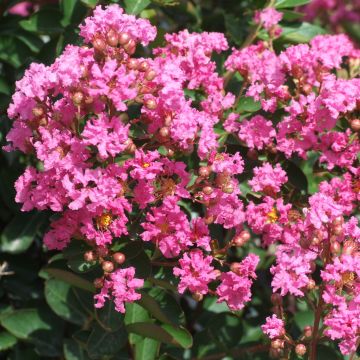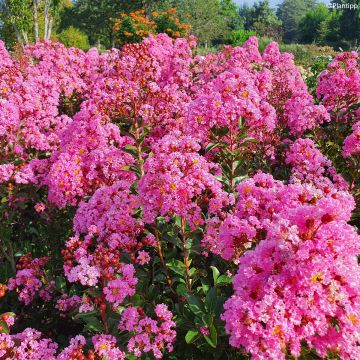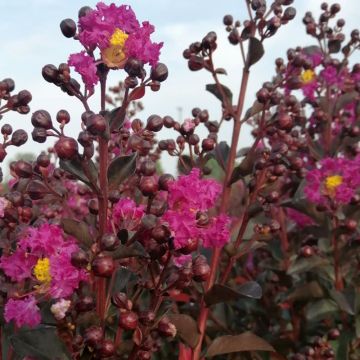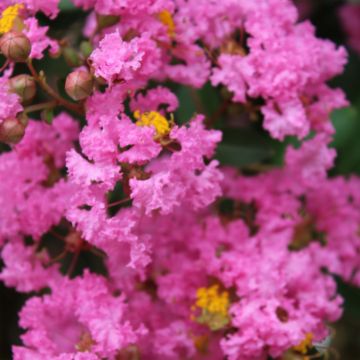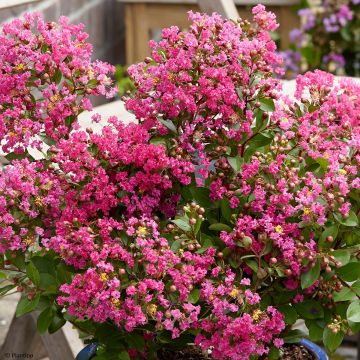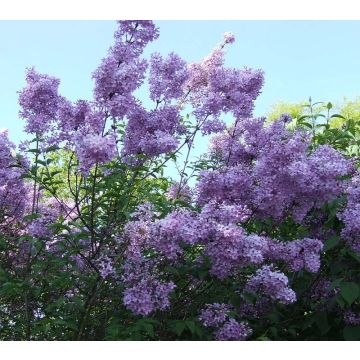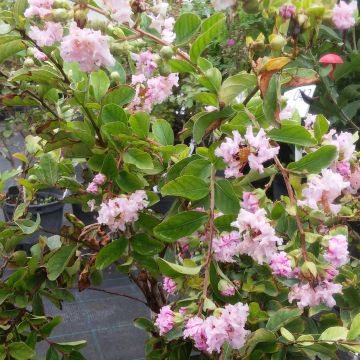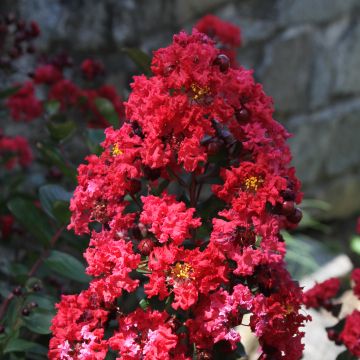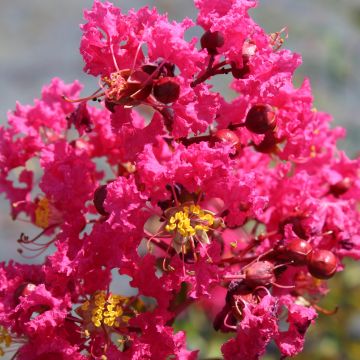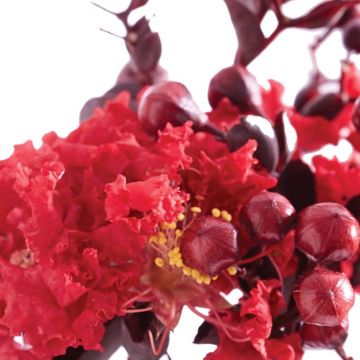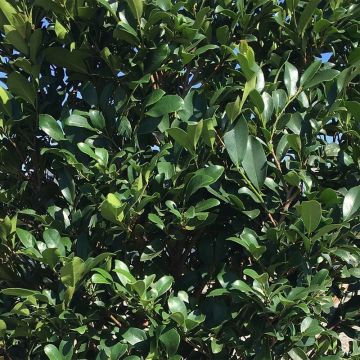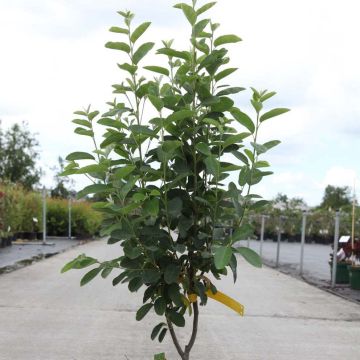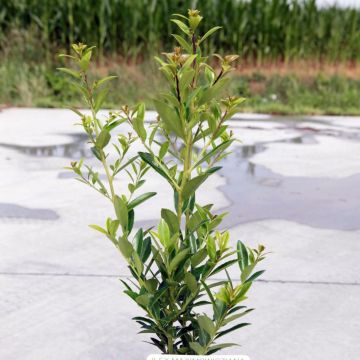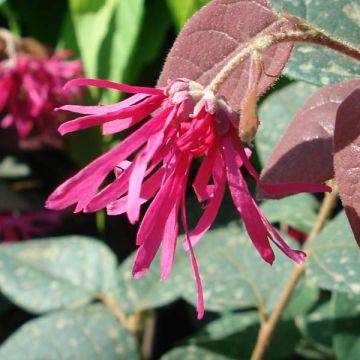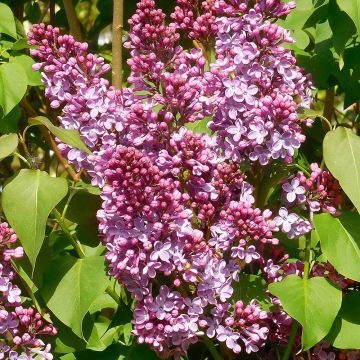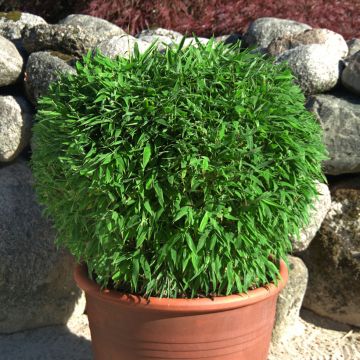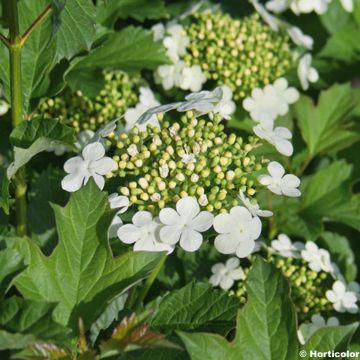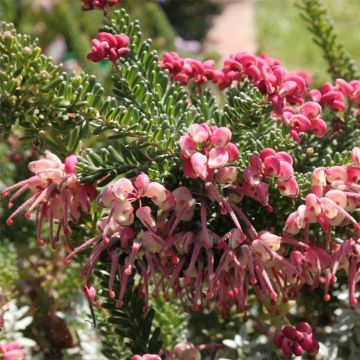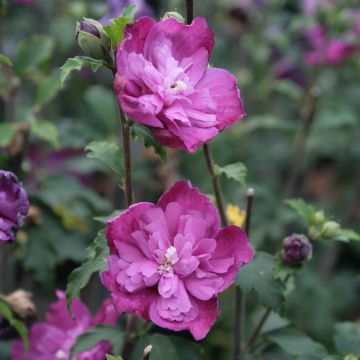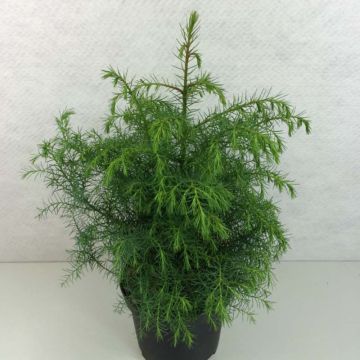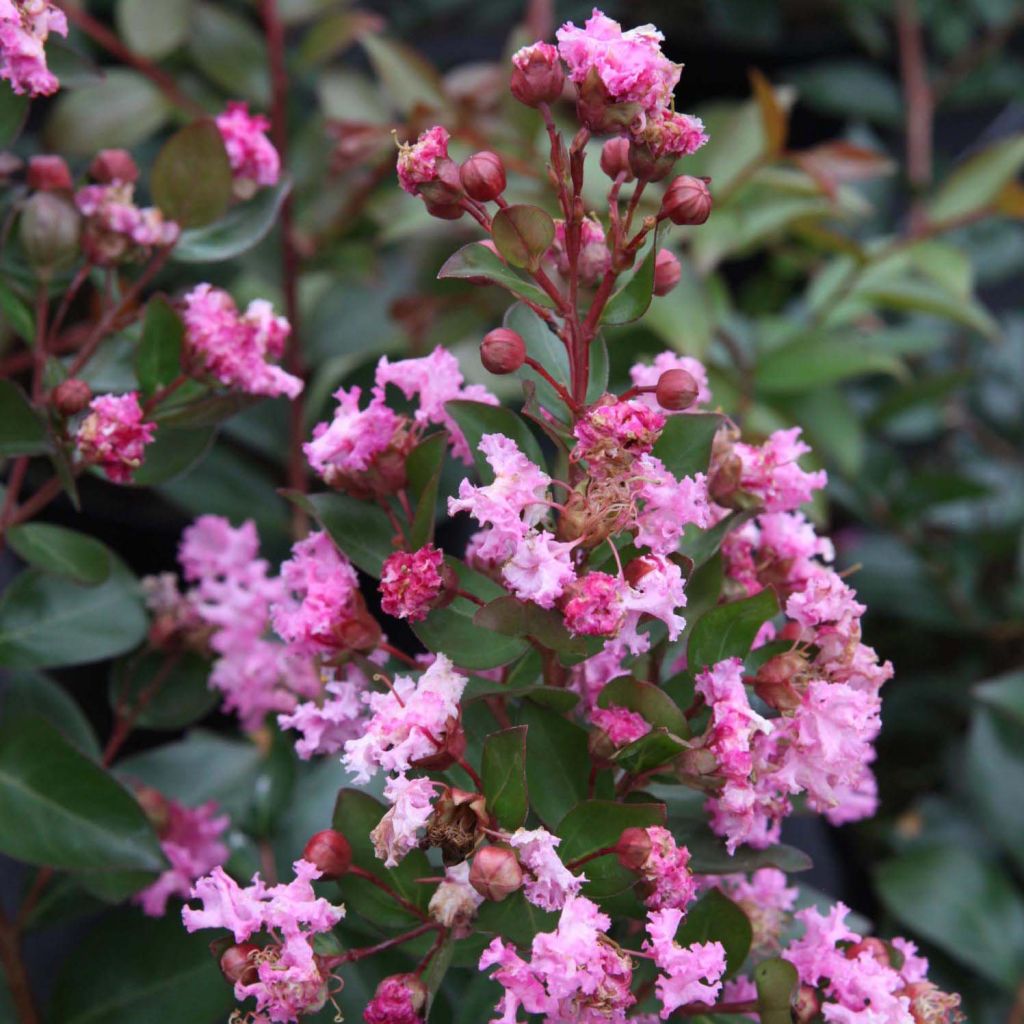

Lagerstroemia indica Mardi Gras - Crape Myrtle
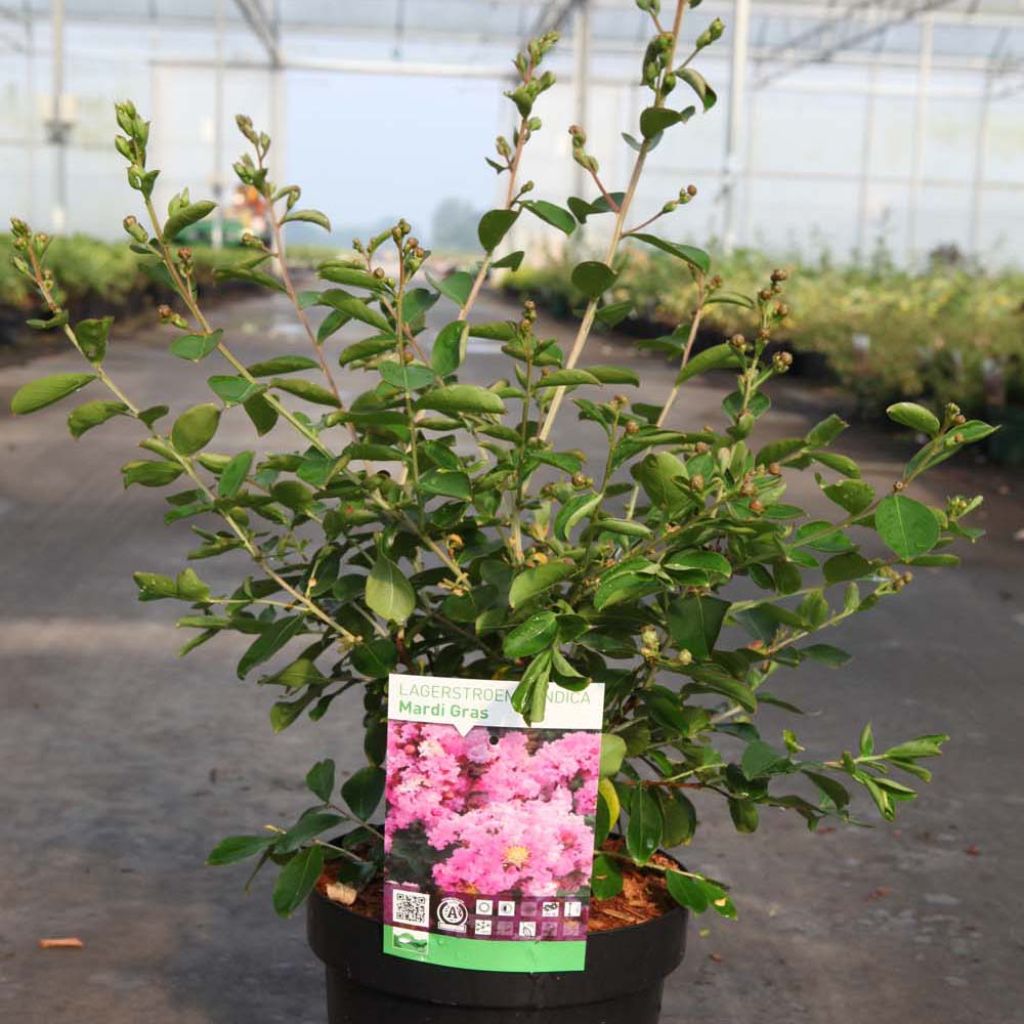

Lagerstroemia indica Mardi Gras - Crape Myrtle
Lagerstroemia indica Mardi Gras - Crape Myrtle
Lagerstroemia indica Mardi Gras
Crape Myrtle, Crepe Myrtle, Indian Lilac
Why not try an alternative variety in stock?
View all →This plant carries a 24 months recovery warranty
More information
We guarantee the quality of our plants for a full growing cycle, and will replace at our expense any plant that fails to recover under normal climatic and planting conditions.
From €5.90 for pickup delivery and €6.90 for home delivery
Express home delivery from €8.90.
Delivery to Corse prohibited: UE law prohibits the import of this plant from mainland France to Corse as part of the fight against Xylella fastidiosa. Please accept our sincere apologies.
More information

Does this plant fit my garden?
Set up your Plantfit profile →
Description
The 'Mardi Gras' Lagerstroemia indica is a bush with a unique personality. It has a miniature, almost prostrate habit, becoming weeping with time, and its abundant and long summer flowering is mauve turning pink-purple. It is also selected for its good hardiness. This small deciduous bush with a ball-like appearance will work wonders in a large pot on the terrace, but also in a rock garden or at the centre of a low perennial bed. It should be placed in a warm and sheltered location exposed to full sun, in neutral to acidic soil.
The 'Mardi Gras' Lagerstroemia indica is a dwarf horticultural cultivar of North American origin. It belongs to the Lythraceae family and descends from the Lagerstroemia indica, a deciduous bush native to China. 'Mardi Gras' is commonly classified among the 'Pixie' series, a line of bushes with a very compact growth, more suitable for small gardens and container gardening, but also for their increased hardiness (down to -15°C (5 °F)). This bush initially has an upright habit, then almost prostrate due to its branches that arch over time. It forms a ramified bush with a slightly weeping spreading crown. It will reach less than 1 m (3 ft 4 in) in all directions. Its growth is slow. It chooses the month of July to initiate its flowering, which will continue until October. The flowers are characterised by thin pedicels, each bearing five undulate-edged petals that make up this flower. The flowers, whose texture resembles crepe, are gathered in dense panicles at the ends of the branches from current year. In 'Mardi Gras', the buds are dark mauve, then they open up to intense mauve-pink. The foliage is leathery and deciduous, born red and then becoming a shiny light green. It comprises small oval leaves, which sometimes take on pretty yellow or red hues in autumn depending on the climate. Lastly, its bark is beautiful, smooth, beige-striate with brown-red, peeling off in coloured patches (cinnamon, faded red, old pink, cream).
Varieties of Lagerstroemia like 'Mardi Gras' make these fantastic little trees accessible to all gardens and sunny terraces. With a modest size, a fluffy and floriferous habit, this variety will look good in front of a shrub bed, a flowering hedge. Design a bed like a mixed display, with Campanula pyramidalis, Salvia sclarea, Aster laevis. In autumn, the bush is accompanied br asters as colourful as itself. In a pot on the terrace, it puts on a show while summer blooms fade. We have imagined a simple three-colour plant tapestry as a ground cover to highlight the summer Lilac 'Mardi Gras'. A carpet of Ceratostigma plumbaginoides, baskets of Silver and Erigeron karvinskianus will reflect its stunning flowering.
NB: Karl Von Linné named this tree to honour his friend Magnus Von Lagestroem (1696-1759), who had sent it to him from India for identification. Originally, this tree was used to decorate Chinese temples. We would like to point out that this tree produces fruits that have a narcotic effect if ingested.
Report an error about the product description
Lagerstroemia indica Mardi Gras - Crape Myrtle in pictures
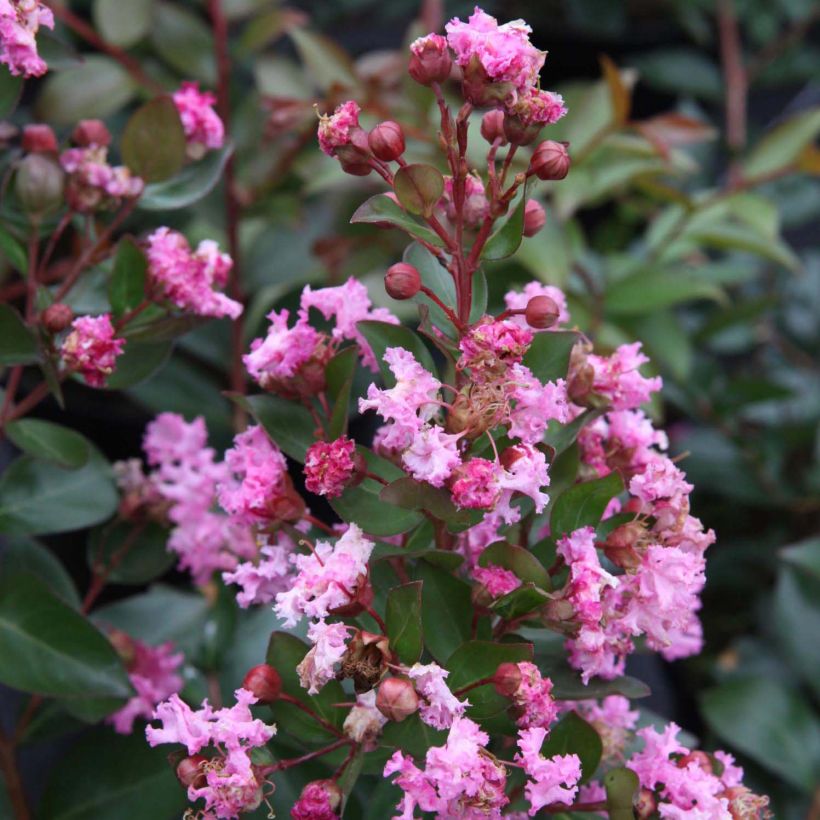

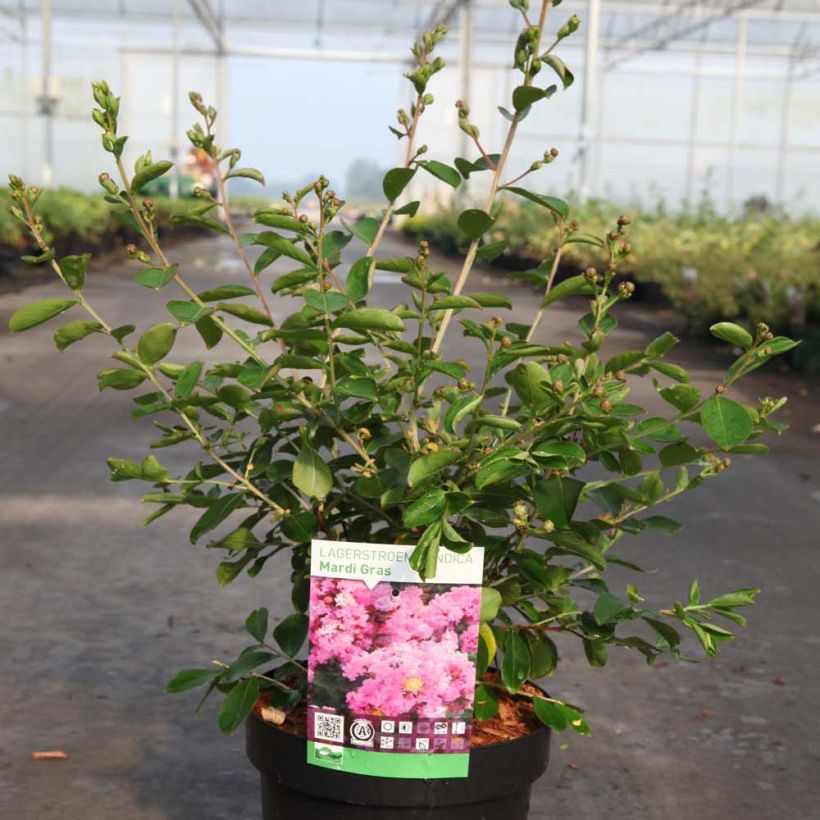

Plant habit
Flowering
Foliage
Botanical data
Lagerstroemia
indica
Mardi Gras
Lythraceae
Crape Myrtle, Crepe Myrtle, Indian Lilac
Cultivar or hybrid
Other Lagerstroemia - Crape Myrtle
Planting and care
We advise planting Lagestroemia indica in spring, when the risk of frosts has passed, in a very sunny and sheltered position, in a rich, moist, well-drained soil, preferably with low lime content, neutral or acidic. In more southern regions, an early autumn planting is preferable, to allow the bush to establish before the arrival of summer heat. It will appreciate the addition of compost and a thick layer of dead leaves, especially during the first two winters in cold regions. It is necessary to prune the flowering branches very short in February-March, leaving only 4 to 6 buds to balance its habit and stimulate the growth of future flower-bearing branches. If necessary, remove weak twigs and poorly positioned branches.
Planting period
Intended location
Care
-
, onOrder confirmed
Reply from on Promesse de fleurs
Hedge shrubs
Haven't found what you were looking for?
Hardiness is the lowest winter temperature a plant can endure without suffering serious damage or even dying. However, hardiness is affected by location (a sheltered area, such as a patio), protection (winter cover) and soil type (hardiness is improved by well-drained soil).

Photo Sharing Terms & Conditions
In order to encourage gardeners to interact and share their experiences, Promesse de fleurs offers various media enabling content to be uploaded onto its Site - in particular via the ‘Photo sharing’ module.
The User agrees to refrain from:
- Posting any content that is illegal, prejudicial, insulting, racist, inciteful to hatred, revisionist, contrary to public decency, that infringes on privacy or on the privacy rights of third parties, in particular the publicity rights of persons and goods, intellectual property rights, or the right to privacy.
- Submitting content on behalf of a third party;
- Impersonate the identity of a third party and/or publish any personal information about a third party;
In general, the User undertakes to refrain from any unethical behaviour.
All Content (in particular text, comments, files, images, photos, videos, creative works, etc.), which may be subject to property or intellectual property rights, image or other private rights, shall remain the property of the User, subject to the limited rights granted by the terms of the licence granted by Promesse de fleurs as stated below. Users are at liberty to publish or not to publish such Content on the Site, notably via the ‘Photo Sharing’ facility, and accept that this Content shall be made public and freely accessible, notably on the Internet.
Users further acknowledge, undertake to have ,and guarantee that they hold all necessary rights and permissions to publish such material on the Site, in particular with regard to the legislation in force pertaining to any privacy, property, intellectual property, image, or contractual rights, or rights of any other nature. By publishing such Content on the Site, Users acknowledge accepting full liability as publishers of the Content within the meaning of the law, and grant Promesse de fleurs, free of charge, an inclusive, worldwide licence for the said Content for the entire duration of its publication, including all reproduction, representation, up/downloading, displaying, performing, transmission, and storage rights.
Users also grant permission for their name to be linked to the Content and accept that this link may not always be made available.
By engaging in posting material, Users consent to their Content becoming automatically accessible on the Internet, in particular on other sites and/or blogs and/or web pages of the Promesse de fleurs site, including in particular social pages and the Promesse de fleurs catalogue.
Users may secure the removal of entrusted content free of charge by issuing a simple request via our contact form.
The flowering period indicated on our website applies to countries and regions located in USDA zone 8 (France, the United Kingdom, Ireland, the Netherlands, etc.)
It will vary according to where you live:
- In zones 9 to 10 (Italy, Spain, Greece, etc.), flowering will occur about 2 to 4 weeks earlier.
- In zones 6 to 7 (Germany, Poland, Slovenia, and lower mountainous regions), flowering will be delayed by 2 to 3 weeks.
- In zone 5 (Central Europe, Scandinavia), blooming will be delayed by 3 to 5 weeks.
In temperate climates, pruning of spring-flowering shrubs (forsythia, spireas, etc.) should be done just after flowering.
Pruning of summer-flowering shrubs (Indian Lilac, Perovskia, etc.) can be done in winter or spring.
In cold regions as well as with frost-sensitive plants, avoid pruning too early when severe frosts may still occur.
The planting period indicated on our website applies to countries and regions located in USDA zone 8 (France, United Kingdom, Ireland, Netherlands).
It will vary according to where you live:
- In Mediterranean zones (Marseille, Madrid, Milan, etc.), autumn and winter are the best planting periods.
- In continental zones (Strasbourg, Munich, Vienna, etc.), delay planting by 2 to 3 weeks in spring and bring it forward by 2 to 4 weeks in autumn.
- In mountainous regions (the Alps, Pyrenees, Carpathians, etc.), it is best to plant in late spring (May-June) or late summer (August-September).
The harvesting period indicated on our website applies to countries and regions in USDA zone 8 (France, England, Ireland, the Netherlands).
In colder areas (Scandinavia, Poland, Austria...) fruit and vegetable harvests are likely to be delayed by 3-4 weeks.
In warmer areas (Italy, Spain, Greece, etc.), harvesting will probably take place earlier, depending on weather conditions.
The sowing periods indicated on our website apply to countries and regions within USDA Zone 8 (France, UK, Ireland, Netherlands).
In colder areas (Scandinavia, Poland, Austria...), delay any outdoor sowing by 3-4 weeks, or sow under glass.
In warmer climes (Italy, Spain, Greece, etc.), bring outdoor sowing forward by a few weeks.

































